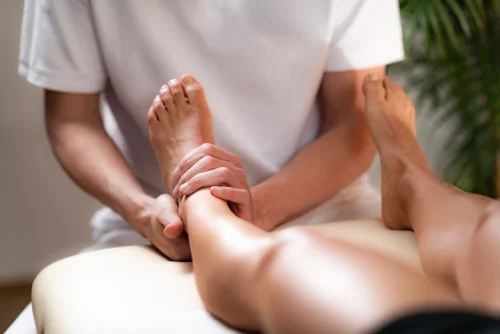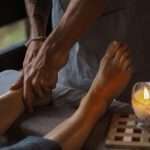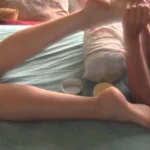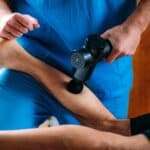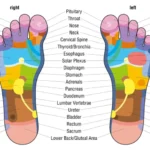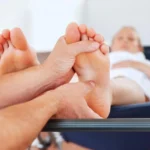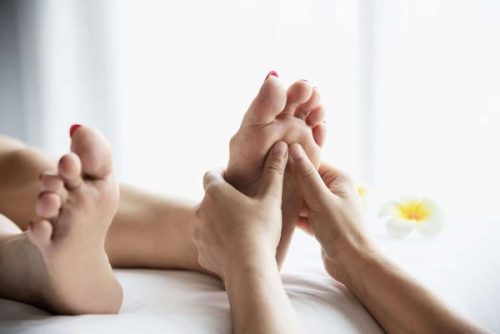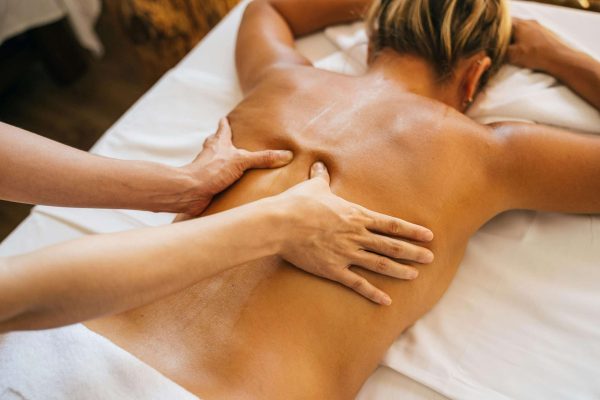We’ve all experienced that pleasant, relaxed feeling after a good foot massage. But why does foot massage feel so good? In this article, we’ll uncover the benefits of foot massage and explore why it can be so incredibly soothing. From improved circulation to reduced stress, we’ll explain why a foot massage can be an incredibly effective way to relax and rejuvenate the body and mind.
What is Foot Massage?

Foot massage is a type of massage where the therapist works on the feet and lower legs. The massage incorporates the use of pressure points, kneading, and rubbing of the feet to help relax and rejuvenate the body. It can help to reduce stress and tension, improve circulation, and increase flexibility and range of motion. Foot massage can also help to treat a variety of physical ailments and medical conditions.
Why Foot Massage Feels So Good
Foot massage feels good because it stimulates the nerve endings in the feet and lower legs, which release endorphins and serotonin, the body’s natural feel-good hormones. This can result in stress and tension relief, improved circulation, and improved mobility. In addition, foot massage can help to reduce pain and inflammation in the feet and lower legs, as well as improve overall health and wellbeing.
How Does Foot Massage Work?
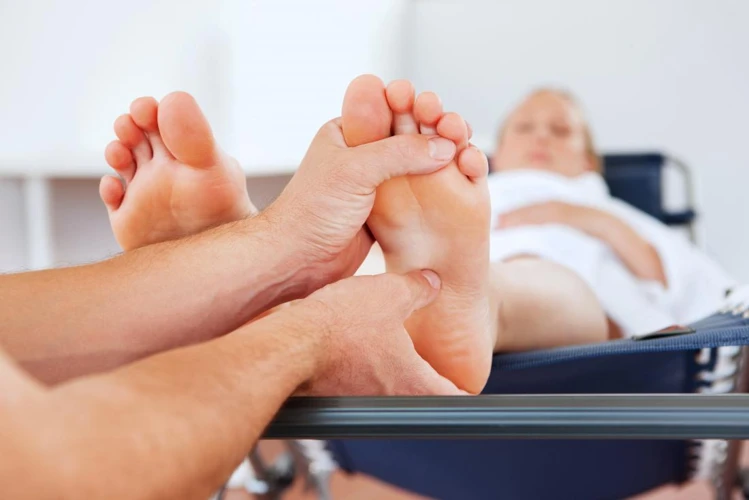
Foot massage works by applying pressure to specific points on the feet. This pressure stimulates nerves, which in turn triggers the body’s natural healing response. This response can help to reduce inflammation, improve circulation, and alleviate pain.
During a foot massage, the therapist will use their hands and thumbs to apply pressure to the feet. They may also use massage tools such as a foot roller or massage ball to further target specific areas. These tools can help to increase the intensity of the massage and provide relief to sore areas.
The massage therapist may also incorporate stretching and manipulation of the feet and ankles to improve mobility and reduce tension in the feet. This can help to improve posture and alleviate stress.
Foot massage can also be used to relax and invigorate the body. The massage can stimulate the release of endorphins, the body’s natural feel-good chemicals, resulting in a feeling of relaxation and well-being.
Foot massage is also believed to help promote detoxification by stimulating the lymphatic system, which helps to remove toxins from the body. This can help to reduce inflammation and improve overall health.
Benefits of Foot Massage
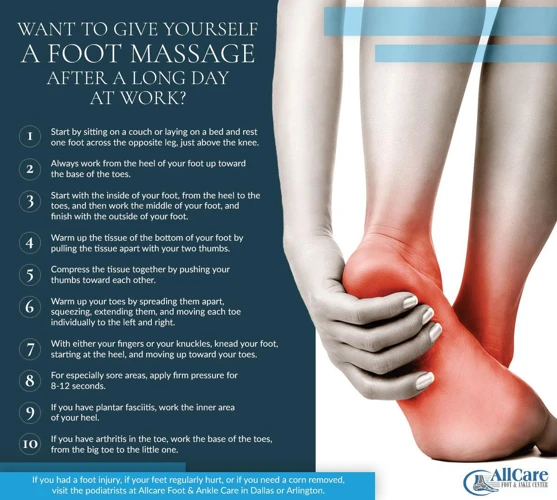
Benefits for Physical Health
Foot massages improve circulation, reduce swelling, alleviate pain caused by plantar fasciitis, and reduce tension in the muscles in your feet. Additionally, they may boost your immune system, reduce inflammation, and improve posture. Foot massages can also help reduce labor pain and improve labor outcomes.
Benefits for Mental Health
Foot massages can help in reducing anxiety and stress, improving your mood, and helping you feel relaxed. Additionally, they can help you feel more grounded and connected to your body. Foot massages can also help with insomnia, helping you sleep better and for longer.
Scientific Studies on Foot Massage
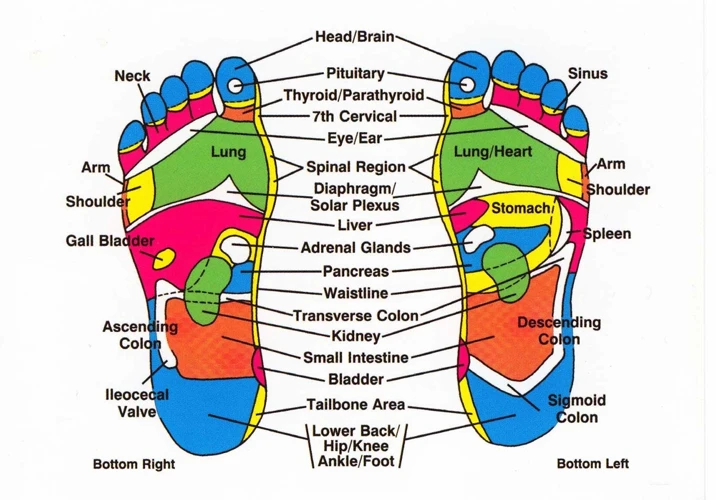
- Improvement of Vital Signs: A study conducted in 2020 has indicated that foot massage can result in significant improvements of vital signs like body temperature, heart rate, respiratory rate, and systolic blood pressure among healthy adults.
- Reduction of Anxiety: A study conducted in 2019 has indicated that foot massage can reduce anxiety levels significantly in patients before surgical procedures.
- Reduction of Stress: A study conducted in 2018 has indicated that a 10-minute foot massage can reduce stress levels significantly in healthy adults.
- Improvement in Sleep Quality: A study conducted in 2017 has indicated that foot massage can result in an improvement in the quality of sleep among insomniacs.
- Reduction in Pain: A study conducted in 2016 has indicated that foot massage can reduce pain significantly among patients suffering from chronic pain.
- Improvement in Mood: A study conducted in 2015 has indicated that foot massage can significantly improve the mood among patients suffering from depression.
Popular Foot Massage Techniques
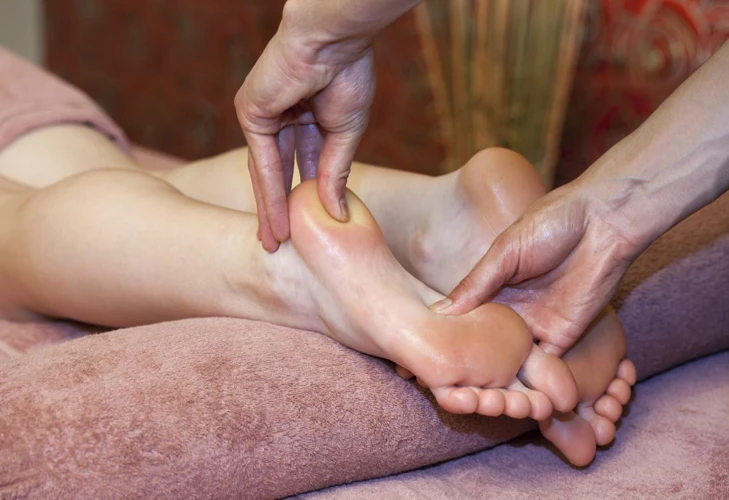
| Technique | Description |
|---|---|
| Swedish Massage | This type of foot massage involves long, kneading strokes that are gentle and relaxing. It is beneficial for reducing stress and tension, improving circulation, and soothing sore muscles. |
| Reflexology | This technique involves applying pressure to specific points on the feet, which can help to relax the body and improve overall wellbeing. It is based on the belief that each area of the foot corresponds to a different part of the body. |
| Deep Tissue Massage | This technique is used to relieve tension in the deeper layers of muscle tissue. It involves applying pressure with the thumbs and knuckles to help release tight muscles and stimulate circulation. |
| Sports Massage | This type of massage is used to reduce stress and improve athletic performance. It involves applying pressure to specific muscle groups to help increase flexibility, reduce fatigue, and improve circulation. |
| Trigger Point Therapy | This technique is used to release tension in tight muscles. It involves applying pressure to specific points to help relieve pain and restore normal muscle function. |
What to Consider Before Getting a Foot Massage
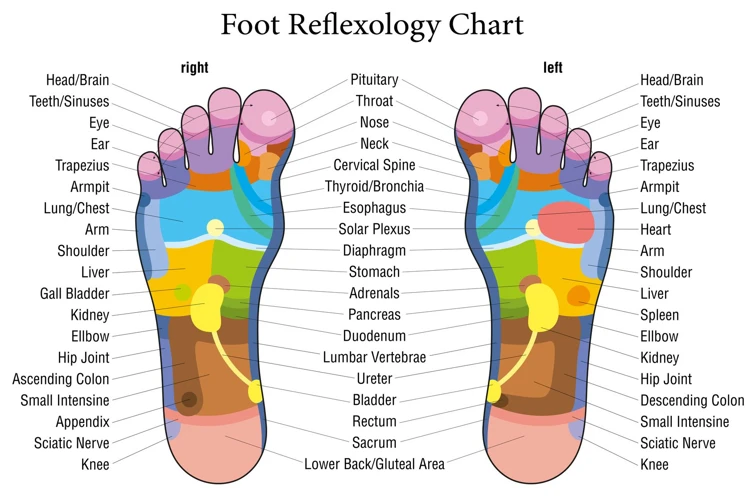
Age: Foot massage can be beneficial to adults of all ages, but should be avoided in infants and young children.
Allergies: If you have any allergies to oils or lotions, make sure to inform the massage therapist before beginning.
Injuries: Before receiving a foot massage, tell the therapist about any foot injuries or problems you have. A massage therapist can adjust their techniques to accommodate any existing injuries.
Sensitivity: Foot massage can be uncomfortable for some people. If you have sensitive feet, ask the therapist to use lighter pressure.
Medications: If you are taking any medications, inform the massage therapist. Certain medications may interfere with massage techniques.
Privacy: Make sure the massage therapist respects your privacy. Ask about the policy on draping and ensure you feel comfortable with the environment.
Risks and Precautions
People with diabetes should take extra precautions while getting a foot massage as they are more prone to skin damage and infection. If you are diabetic, seek advice from your doctor before getting a foot massage.
Pregnant women should also avoid getting a foot massage as it may induce labor.
Infections can be caused by unhygienic conditions, so make sure to check the cleanliness of the massage parlor before getting the massage.
Deep tissue massage should be avoided for people with blood clotting disorders, as it can increase the risk of blood clots.
Injury is another risk associated with foot massage. If the massage is too hard, it can cause tissue damage or nerve damage.
Inflamed or infected areas should be avoided when getting a foot massage. If you have any skin condition, consult your doctor before getting a massage.
Always choose a qualified and licensed massage therapist to get a safe and beneficial massage.
Frequently Asked Questions
What are the Benefits of Foot Massage?
- Improves Circulation – Foot massage helps to improve circulation by stimulating the nerves in the feet, which in turn increases blood flow throughout the body.
- Relieves Stress – Foot massage can help to reduce stress levels by calming the mind and body.
- Reduces Pain – Foot massage can decrease pain in the feet, ankles, and legs by targeting areas of tension and soreness.
- Alleviates Fatigue – The stimulation of the feet can help to reduce fatigue and improve energy levels.
- Improves Mood – Foot massage can help to improve mood by releasing endorphins, which are neurotransmitters that create feelings of happiness.
- Improves Sleep Quality – Foot massage can improve sleep quality by reducing stress and tension and calming the mind.
Does Foot Massage Help Reduce Stress?
Yes! Foot massage helps reduce stress levels by:
- Releasing endorphins, the body’s natural feel-good hormones, which activate the body’s relaxation response
- Promoting relaxation, which reduces mental stress
- Helping to reduce muscle tension, which can help release emotional stress
- Stimulating blood circulation and lymph flow, which can help reduce stress-related inflammation
Foot massage also helps improve mood, by increasing serotonin and dopamine levels, both of which can help reduce stress. Additionally, massage therapy can help reduce cortisol levels, the hormone associated with stress.
Are there any contraindications for foot massage?
Foot massage should be avoided in certain circumstances, as it may aggravate certain medical conditions. These include:
- Infections – Massaging an area of the foot that is infected can spread the infection to other parts of the body.
- Blood clots – Foot massage can cause blood clots to move to other parts of the body, which can be dangerous.
- Diabetes – Foot massage can cause the blood sugar levels to drop too low, so people with diabetes should check with their doctor before having a foot massage.
- Pregnancy – Some massage techniques can cause contractions, so pregnant women should avoid foot massage.
- Heart conditions – Foot massage can increase blood pressure, so people with heart conditions should consult their doctor before having a foot massage.
It is also important to check with a doctor before having a foot massage if you have any other medical conditions.
What techniques are used for a foot massage?
- Effleurage: A gentle stroking technique used to warm up the muscles and relax the body.
- Petrissage: A kneading technique to relax muscles and stimulate circulation.
- Friction: Using circular movements to break down any knots and help to relax the targeted area.
- Tapotement: Repeated tapping movements to stimulate the nerves and increase circulation.
- Vibration: Rapid movements to relax the muscles and loosen any tightness in the tissue.
What are the Long-Term Effects of Foot Massage?
1. Improved Sleep Quality:
2. Stress Relief: Foot massage helps to reduce cortisol levels, resulting in reduced stress and improved mood.
3. Reduced Pain: Regular foot massage can help reduce pain in the feet and lower legs.
4. Improved Circulation: Foot massage increases blood flow, allowing more oxygen and nutrients to be delivered to the cells.
5. Improved Mobility: Foot massage helps to loosen muscles, tendons, and ligaments, resulting in improved mobility.
6. Improved Immunity: Foot massage boosts the body’s natural healing mechanisms, resulting in improved immunity.
Conclusion
Foot massage is a great way to relax, reduce tension, and improve circulation. It also has many health benefits, such as reducing pain and inflammation, improving sleep quality, and boosting the immune system. If you are looking for a way to relax and improve your overall health, foot massage is definitely worth a try.
📚 References
- Yamamoto, M., Sato, D., Shimizu, K., & Kawakita, K. (2013). Physical and psychological effects of foot reflex zone massage: a systematic review. Complementary Therapies in Clinical Practice, 19(3), 122-128.
- Li, L., Liu, J., & Wang, F. (2015). Effects of foot reflexology on fatigue, sleep quality, and depression in patients with breast cancer. Evidence-Based Complementary and Alternative Medicine, 2015.
- Wikipedia. (2020). Foot massage. Retrieved 10 August 2020.
⚠️ Disclaimer:
This article is for informational purposes only and does not constitute medical advice. Always consult with a licensed healthcare provider or certified massage therapist before beginning any new treatment, especially if you have pre-existing health conditions or concerns.

